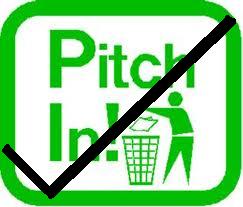Bacteria Culture:
1.Open the lid of the petri dish.Do not open it fully.
2.Put cotton bud into water sample.
3.Swap on the side labelled Kallang/Jurong.
4.Close petri dish lid and seal with parrafin strip.
5.Flip petri dish around to prevent inaccuracy of results.
6.Leave the bacteria to grow for about one to two days.
7.Observe results after one to two days.
Water temperature:
1.Use the deionized water to deionize the temperature sensor.
2.Put the temperature sensor into the water and find out the temperature
pH sensor:
1.Uncap the pH sensor from the bottle of deionized water.
2.Deionize the pH sensor with deionized water.
3.Place the pH sensor into the water to test the pH level of water.
[OTHER SENSORS USED]
Air Temperature:
1. Use the distilled water to deionize the temperature sensor.
2. Hold the temperature sensor upwards in the air and take the air temperature reading 3 times and get an average.
Turbidity:
1. Pour the river water into the glass bottle and cap it.
2. Wipe the external surface of the bottle with a tissue and ensure the glass is clean free from fingerprints.
3. Place the glass bottle into the turbidity sensor slot with the glass bottle arrow aligned with the sensor arrow and close the sensor cover.
4. Record down the reading 3 times and get an average.
5.Remove and wash the bottle after use.
Dissolved Oxygen:
1. Rinse the sensor with distilled water and dry it with tissue.
2. Immerse the sensor into the river water.
3. Record the reading 3 times to get an average.
Salinity:
1. Rinse the sensor with distilled water and dry it with tissue.
2. Immerse the sensor into the river water.
3. Record the reading 3 times to get an average
















